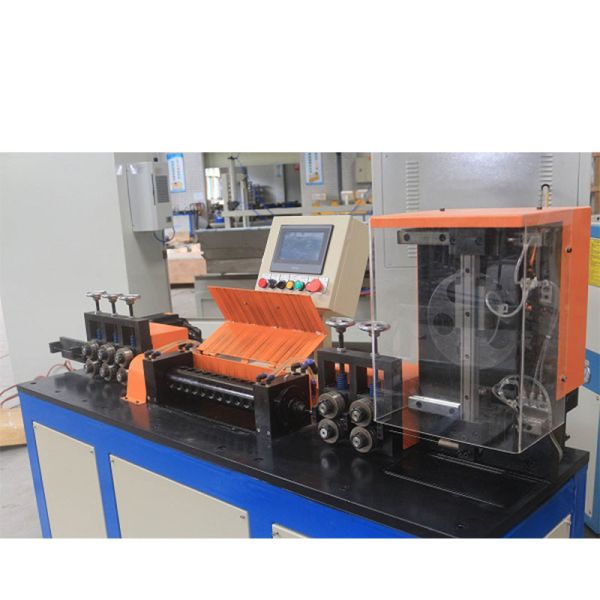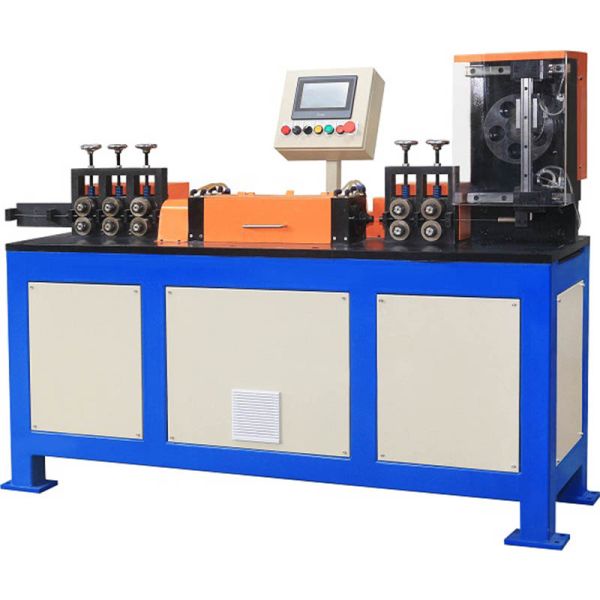Welding Wire Machine
Benefits of Using a Welding Wire Machine
Welding is a crucial process in various industries, from construction to automotive manufacturing. It involves joining two or more metal pieces together by melting them and allowing them to cool and solidify. One essential component of welding is the welding wire, which is used to feed the filler material into the weld pool. Traditionally, welding wire was fed manually, which required a skilled operator to control the speed and direction of the wire. However, with advancements in technology, welding wire machines have become increasingly popular for their efficiency and precision.
One of the primary benefits of using a welding wire machine is the consistency it provides in the welding process. Manual feeding of welding wire can lead to inconsistencies in the weld, resulting in weak joints and potential structural failures. A welding wire machine, on the other hand, ensures a steady and uniform feed of the filler material, resulting in stronger and more reliable welds. This consistency is especially important in industries where weld quality is critical, such as aerospace and nuclear power.

Another advantage of using a welding wire machine is the increase in productivity it offers. Manual feeding of welding wire can be a time-consuming process, requiring the operator to constantly monitor and adjust the feed rate. With a welding wire machine, the process is automated, allowing the operator to focus on other aspects of the welding job. This not only saves time but also increases the overall efficiency of the welding operation.
In addition to consistency and productivity, welding wire machines also offer improved safety benefits. Manual feeding of welding wire can expose operators to potential hazards, such as burns and electric shocks. Welding wire machines are equipped with safety features, such as wire guides and protective covers, to minimize the risk of accidents. By reducing the need for manual intervention, welding wire machines help create a safer working environment for welders.
Furthermore, welding wire machines are versatile and can be used with a variety of welding processes, such as MIG (Metal Inert Gas) and TIG (Tungsten Inert Gas) welding. This flexibility allows operators to switch between different welding techniques without the need for additional equipment, saving time and money. Welding wire machines also come in a range of sizes and configurations to suit different welding applications, from small-scale repairs to large-scale fabrication projects.
Overall, the benefits of using a welding wire machine are clear. From improved consistency and productivity to enhanced safety and versatility, welding wire machines offer a range of advantages for welders and fabricators. As technology continues to advance, welding wire machines will likely become even more sophisticated, further enhancing the efficiency and quality of the welding process. Whether you are a professional welder or a hobbyist, investing in a welding wire machine can help take your welding projects to the next level.
How to Choose the Right Welding Wire Machine for Your Needs
Welding wire machines are essential tools for any welding project, whether you are a professional welder or a DIY enthusiast. These machines are used to feed welding wire into the welding torch, ensuring a smooth and consistent weld. With so many different options available on the market, choosing the right welding wire machine for your needs can be a daunting task. In this article, we will discuss some key factors to consider when selecting a welding wire machine to help you make an informed decision.
One of the first things to consider when choosing a welding wire machine is the type of welding you will be doing. Different welding processes require different types of wire feeders, so it is important to choose a machine that is compatible with the welding process you will be using. For example, if you will be doing MIG welding, you will need a wire feeder that is specifically designed for MIG welding. On the other hand, if you will be doing TIG welding, you will need a wire feeder that is compatible with TIG welding.
Another important factor to consider when choosing a welding wire machine is the size of the wire spool it can accommodate. Some machines are designed to accommodate larger spools of welding wire, while others are designed for smaller spools. If you will be using a lot of welding wire in your projects, you may want to choose a machine that can accommodate larger spools to minimize the need for frequent spool changes.
It is also important to consider the speed and accuracy of the wire feeder when choosing a welding wire machine. A machine with a fast and accurate wire feeder will help you achieve clean and consistent welds, while a machine with a slow or inaccurate wire feeder may result in poor weld quality. Look for a machine that offers adjustable wire feed speed and tension settings to ensure precise control over the welding process.
When choosing a welding wire machine, it is also important to consider the power source. Some machines are powered by electricity, while others are powered by compressed air. Electric welding wire machines are typically more powerful and versatile, but they may not be suitable for all environments. Compressed air-powered machines are more portable and can be used in areas where electricity is not readily available.

Finally, it is important to consider the overall quality and durability of the welding wire machine. Look for a machine that is made from high-quality materials and is built to last. Check customer reviews and ratings to get an idea of the machine’s reliability and performance. Investing in a high-quality welding wire machine will ensure that you have a reliable tool that will last for years to come.
In conclusion, choosing the right welding wire machine is essential for achieving clean and consistent welds in your projects. Consider factors such as the type of welding you will be doing, the size of the wire spool, the speed and accuracy of the wire feeder, the power source, and the overall quality and durability of the machine when making your decision. By taking the time to research and compare different options, you can find a welding wire machine that meets your specific needs and helps you achieve professional results in your welding projects.
Maintenance Tips for Keeping Your Welding Wire Machine in Top Condition
Welding wire machines are essential tools for any welding operation, as they help feed the welding wire smoothly and consistently to the welding torch. To ensure that your welding wire machine operates at its best, regular maintenance is key. By following a few simple tips, you can keep your welding wire machine in top condition and avoid costly repairs or downtime.
One of the most important maintenance tasks for your welding wire machine is keeping it clean. Dust, dirt, and debris can build up on the machine over time, causing it to malfunction or operate less efficiently. Regularly cleaning the machine with a soft brush or cloth can help prevent these issues. Pay special attention to the wire feed mechanism, as any buildup in this area can cause the wire to jam or feed unevenly.
In addition to keeping your welding wire machine clean, it’s also important to regularly inspect and lubricate the moving parts. Check for any signs of wear or damage, such as loose screws or worn gears, and replace or repair them as needed. Lubricate the moving parts with a high-quality lubricant to ensure smooth operation and prevent premature wear.
Another important maintenance task for your welding wire machine is checking and adjusting the tension settings. Proper tension is crucial for feeding the welding wire smoothly and consistently. If the tension is too loose, the wire may feed erratically or jam, while if it’s too tight, the wire may break or wear prematurely. Refer to the manufacturer’s guidelines for the recommended tension settings and adjust them as needed.
Regularly inspecting the welding wire itself is also important for maintaining your welding wire machine. Check for any signs of damage, such as kinks or bends, and replace the wire if necessary. Using high-quality welding wire can also help prevent feeding issues and ensure a strong, consistent weld.
Lastly, don’t forget to regularly calibrate your welding wire machine to ensure accurate wire feeding. Over time, the calibration settings may drift, leading to feeding issues or poor weld quality. Refer to the manufacturer’s guidelines for the recommended calibration procedure and schedule regular calibrations to keep your machine operating at its best.
In conclusion, regular maintenance is essential for keeping your welding wire machine in top condition. By following these simple tips, you can prevent costly repairs, downtime, and ensure smooth and consistent wire feeding. Remember to keep your machine clean, inspect and lubricate the moving parts, check and adjust the tension settings, inspect the welding wire, and calibrate the machine regularly. With proper maintenance, your welding wire machine will continue to provide reliable performance for years to come.





